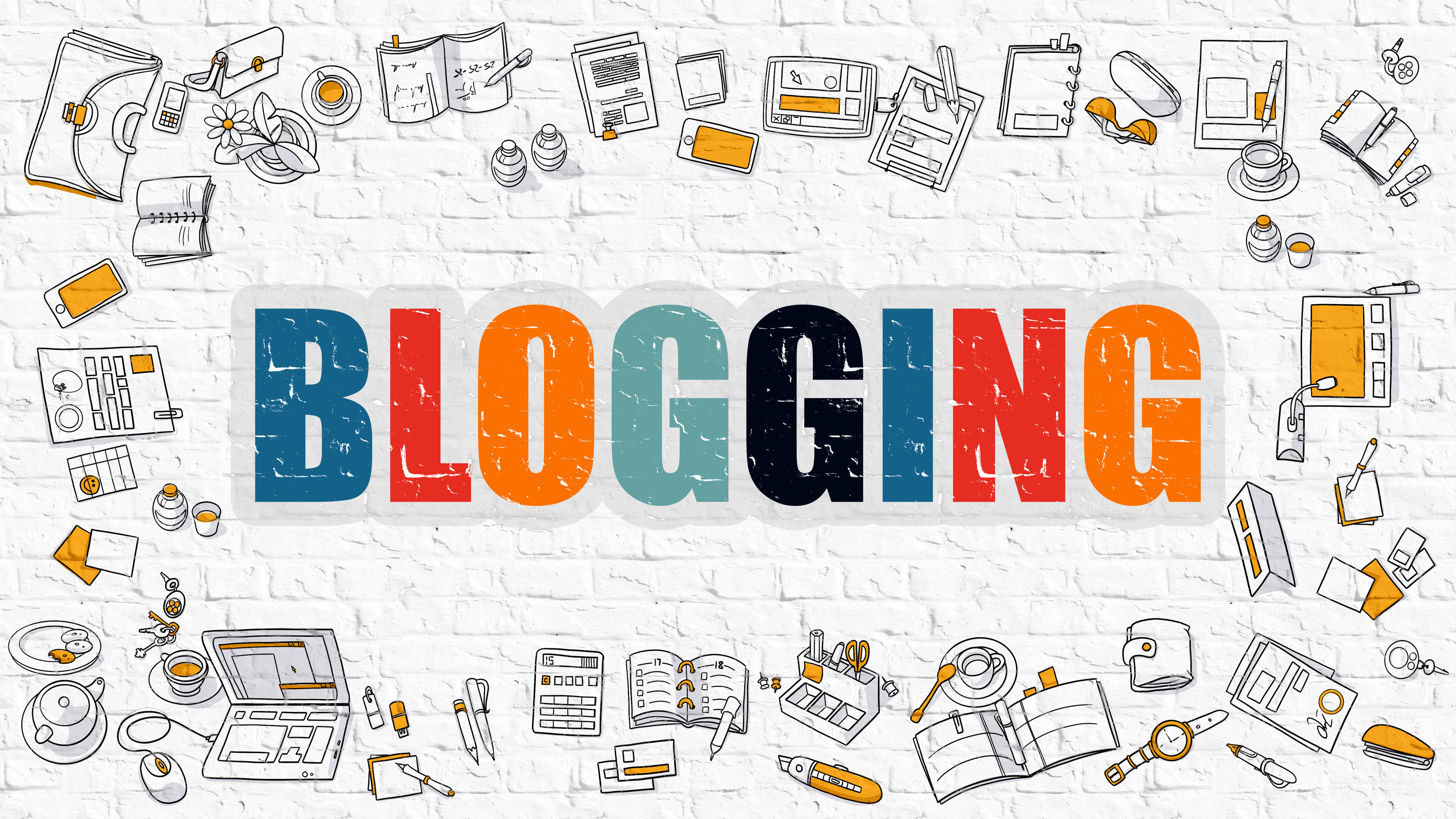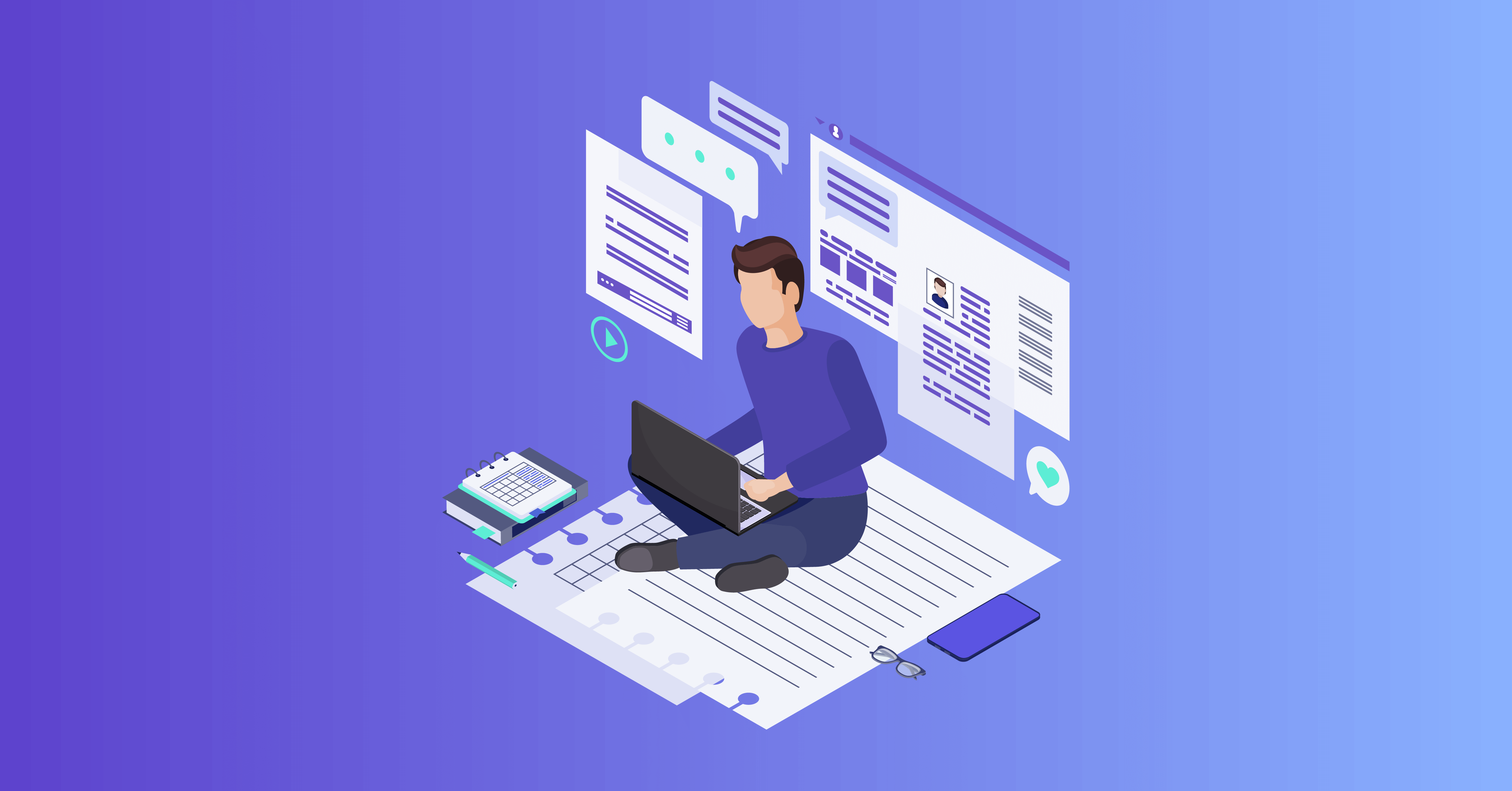Introduction to Blogging#

Let's discover
Learn Blogging with Blue Code in less than 5 minutes.
Getting Started#
Do you remember a time when blogs didn’t exist? It seems like so long ago. Blogs are a part of popular culture and they’re not going anywhere any time soon. Everyone has a blog these days. It’s almost impossible to think of a company or person in the public eye who doesn’t have a blog. Blogs are our springboard to the world – they allow us to vent, to create a persona, make a statement or share our world. But, what if you’re new to the world of blogs, and don’t know what to do, or how to start one?
Get started Things to Consider Before Starting a Blog.#
What’s your blog going to be about? This is the most crucial aspect of the entire blogging process. Are you a firefighter with a passion for saving puppies? Or do you create awesome sandwiches and love sharing your recipes? You could be a writer who needs to extoll the virtues and pitfalls of the publishing. Point being, blogs come in many shapes and sizes, and you need to know exactly what kind of blog you want to start.
There are a lot of platforms when it comes to blogging. But WordPress and Google's Blogger is the most viable option. WordPress is simple to use, and it’s customizable. Seriously, there are thousands of WordPress themes ranging to free to super expensive. It all depends on the experience you’re looking to create for your users.
Should be a no-brainer, but a lot of folks screw this step up. When you’re choosing a domain name, consider the following:
- Pick a name that’s easy to remember
- Pick a name that’s easy to brand
- Pick a name that will be easy for Google to find
After you’ve signed up for your blog, got the hosting taken care of and figured out the URL, it’s time to pick a theme. You can spend all day looking at themes. Pick one that speaks to what you want out of your blog and go for it. Once you’ve installed the blog theme, it’s time to start posting content.
Monetizing a blog takes work. Just because you put the content out there doesn’t mean droves of people are suddenly going to discover you. You need a plan, and you need to understand concepts like Search Engine Optimization (SEO) and metadata. Since you’re just starting out, we won’t get into the weeds of what to do when it comes to monetizing a blog, but one critical step that needs to be taken is continually promoting your blog posts across social media. Your social media platform is your greatest strength when promoting your blog—the two go hand in hand. Work across Facebook, Twitter, Snapchat, and Instagram to get folks to read and hopefully share. And that’s all there is to starting a blog. Blogs, at their core, are about content. If you’re telling a unique story that people want to continually learn about, readers will come. A blog takes dedication and the desire for it to become a place to learn about a topic that you’re passionate about.
Start Blogging with Blue Code's Tutorial#

.................................................................................
.............................................................................................
The Steps Covered In This Blogging is Guided by Blue Code#
It’s nowhere near as difficult as setting up a website from scratch (there’s very little technical ability needed here). In fact, there’s no coding required by you. Good news, huh?
Start a Blog in 5 Steps: There are five main steps you need to do in order to start a blog. If you follow this guide exactly, you’ll have your own blog set up in 30 minutes or less.
- Choose a great blog platform
- Choose a web host for your blog
- How to Set up a blog on your own domain
- Design your new blog
- Useful resources for blogging
You're on your way to become a blogger. Phew !
Choosing where you want to build blog is pretty much the first thing you have to do.
It’s by far one of the biggest blogging platforms in the world, with countless plugins and add-ons and almost infinite ways to design and layout your blog.
There are more than 82 million active users of WordPress = a lot, basically.
wordpress
There are other alternatives, however, and they are listed below:
- Blogger – Definitely the next best thing to WordPress.
- Tumblr – Half social network, half blog. Interesting, and very simple to use.
Even though WordPress is bigger (and probably better) than those two, here are my reasons why you should still go with WordPress:
Super easy set-up and is free to use Tons of free themes and layouts (I’m not kidding, there are gazillions). There’s a massive support forum in case you get stuck (you won’t, but it’s nice to have it there if you need it). Your blog will be insanely fast and it’ll also look Functionality and form – perfect! People can interact with you easily. Your content can be shared, commented on, and so on. Here’s an article about different blogging platforms (including WordPress), give it a read:
Now, Step 2
Whoa, slow down there! This is the biggest decision you’ll have to make before we go any further. You need to decide whether to pay for your blog or grab a free one.
WordPress, Tumblr, and Blogger all offer free blogs for anyone. Awesome, right? It’s perfect for those of us who aren’t super serious about blogging. But it does have downsides:
1) You won’t be able to get your OWN domain name
On a free blog, your blog’s web address (your URL) will be butt-ugly. Like, really ugly. In short, create a free blog with any other the above free blog services and it’ll look like this:
yourblog.wordpress.com yourblog.blogspot.com yourblog.tumblr.com I know, ugly right?
2) Limits and more limits
There are some limits to free blogs. You can’t fully monetize it, and you don’t have the possibility to upload all those videos and images you want to show everyone – it’s all limited. Worse still, you won’t even have access to the free themes offered by WordPress.
3) You DON’T OWN your blog
It might sound silly at first, but you don’t actually own your blog. It’s hosted on someone else’s web property and they can delete it if they want to. They have done so in the past, and keep doing it in the future. Which means all your hard work on your blog, all those countless hours of writing blog posts might have vanished within seconds. Sad…
On the other hand, with a self-hosted blog on your own domain name – you are the REAL owner of your blog. You’ll be able to name your blog whatever you want, for example, “YourName.com” or “YourAwesomeBlog.com. You can end it with .com, .co.uk, .net, .org, or virtually any other web suffix. Add to that unlimited bandwidth for videos, images, and content plus the free themes and you have a winning combo.
So how much is hosting and a domain name? Not as much as you’re thinking, fortunately. It usually works out to about $5 to $10 per month, depending on your hosting provider which is less than a couple of coffees.
If you still have questions, here’s some further information for you to look at:
Blue Code is going to push ahead based on the premise you’ve chosen WordPress, and if you haven’t, you should. Seriously, it’s the best.
If you’re still a little confused by what a self-hosted blog is, allow Blue-Code to explain and how you can go about setting one up for yourself.
You’ll need to come up with a domain name you like and also choose a hosting company that can host your blog.
Domain:#
The domain is basically the URL of your website. Examples: google.com (Google.com is the domain), Facebook.com (Facebook.com is the domain). See? Simple! Hosting: Hosting is basically the company that puts your website up on the internet so everyone else can see it. Everything will be saved on there. Think of it as a computer hard-drive on the internet where your blog will be saved. Disclosure: I recommend using Hostgator for web hosting. If you click through one of my links and make a purchase, I will receive a commission, which helps me keep bloggingbasics101.com up and running.
It’s probably one of the cheapest (less than $3 per month) hosting providers out there. A domain name will cost around $10-15 a year, but with Hostgator, you can get that for FREE first year.
If you do sign up with Hostgator be sure to use the coupon code BB101 as this will unlock the maximum discount they offer on all their hosting packages.
:). Big smiles for that!
If for any reason you don’t want to go with Hostgator, feel free to choose your own hosting company. Most, if not all of them, should have a “one-click” WordPress install solution on their admin panel.
That button will automatically install WordPress on your blog. Did I say it was simple or what?
All you need to do is sign up with Hostgator (or your chosen provider), choose your hosting plan and a domain name and look for the one-click WordPress install button on the admin panel.
If you are getting stuck at any point this guide may help as it has screenshots.
WordPress essentials aren’t often needed, but I’d recommend whois privacy (that will keep all your personal details private) and definitely automated backups (that’ll save your website just in case anything fails or disappears so you won’t lose any or very little of your blog).
Start a Blog with Hostgator today and get an exclusive 60% discount with coupon BB101
Once WordPress is installed on your website, all you have to do to start blogging is go to your WP-Admin page usually www.yourblognamehere.com/wp-admin and start writing by adding a new post.
At the start, the layout looks confusing, but it gets very understandable quickly. Don’t worry!
Step 4 – Designing your WordPress blog Now, the fun bit.
Let’s make your blog look exactly how you want it to. To choose a new theme, you can either head to Appearance > Themes and install a free WordPress theme or you can head to a premium theme website like ThemeForest.net and buy a theme for around $40.
Usually choose something that looks professional and pretty easy to customize. WordPress also has this awesome feature that allows you to change themes with just a few clicks. So if you start getting tired of your current blog template, you can just switch to another one without losing any precious content or images.
choose-blog-theme
Remember, your blog’s design should reflect both you and your personality, but also what the blog is about. There’s no point having a football-orientated theme if your blog is about tennis, understand?
On top of that, it should be easy to navigate if you want people to stick around. If it’s tricky and difficult to move around it, people won’t stay. After all design is a subjective art; meaning everyone likes different things.
But no one likes ugly websites, and they especially hate websites that need a university degree to navigate. Make it easy for them.
For more reading, I’ve put together 3 blog posts about designing your blog. Feel free to check them through.
Blog Design: Keep It Clutter Free and User-Friendly Advice for Blog Design and Blog Goals Is there any software I can use to make my own graphics, button, and banner? Last step! Woo!
Bloggers come to blogging arena with varying degrees of online and social media experience, but we’ve all made more than a few newbie mistakes – there’s always room for more learning and improvement, whether you’re a beginner or you’ve been blogging for years.
These articles may help you avoid some of the growing pains when it comes to your first blog – enjoy!:
And that’s it! Blue Code is more than confident that your initial blog set up should now be finished and ready to go, and all that should have been really easy.
Enjoy your new blog!
Blog Sites to Begin Blogging now#
Wordpress
Click on me to Start Your First Blog with Wordpress
Blogger
Click on me to Start Your First Blog with Blogspot
Medium
Click on me to Start Your First Blog with Medium
Tumblr
Click on me to Start Your First Blog with Tumblr
Jimdo
Click on me to Start Your First Blog with Jimdo
DigitalPress
Click on me to Start Your First Blog with Digital Press
